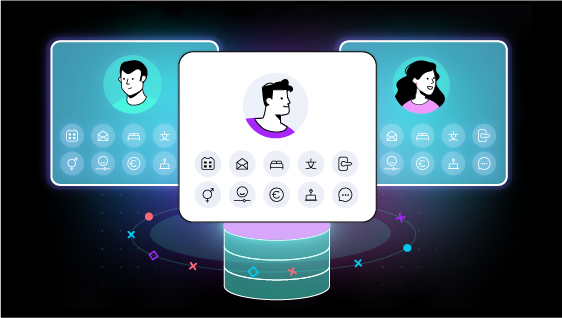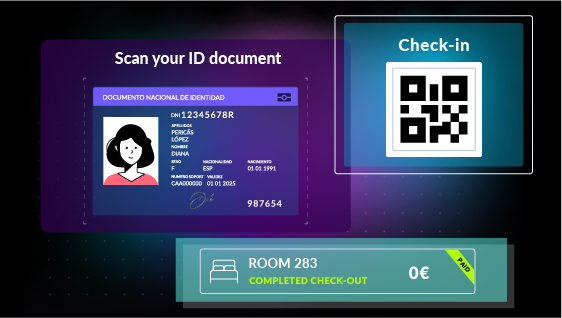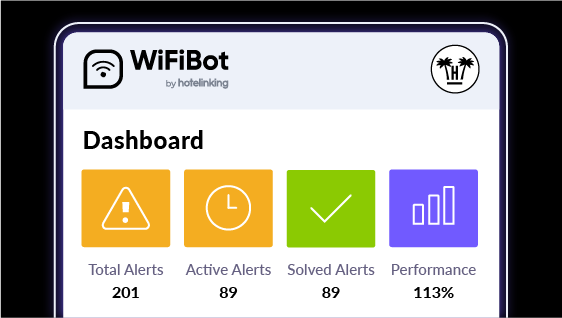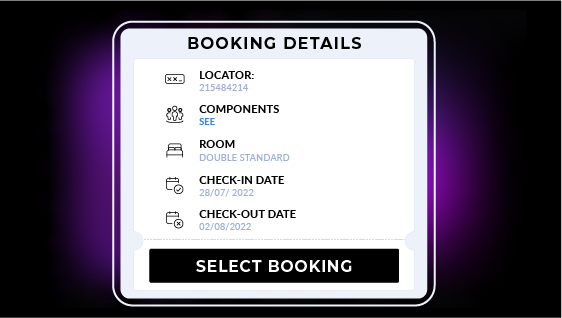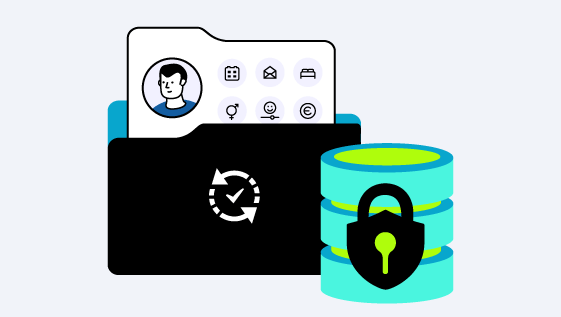
David Ezquerro (PUSHTech): “The post-stay phase is the most relevant one to disintermediate bookings and build customer loyalty.”
David Ezquerro is Chief Revenue Officer of PUSHTech, a company that has a CRM and an automated marketing, sales and management platform, which allows acquiring, segmenting, retaining and helping customers, through communications via email, push, chat and SMS.
Specialist in the direct hotel channel, he has been helping hotel chains in different regions of the world from Europe, the Middle East and Southeast Asia to obtain positive results in direct sales for more than 15 years. He has always been linked to the hotel digital sector, where he has worked in companies such as HRS Group, Grupo Hotusa and, his most outstanding experience, Roiback, where he has been part of the team since its creation.
The pandemic has changed peoples’ hotel booking habits, boosting the number of direct sales. Do you think this trend will continue?
It is true that the dynamics generated by the pandemic have considerably boosted the use of the direct channel, making it one of the main sales channels for hotels. In a post-pandemic world, hotel owners now have a great opportunity to keep this trend going by directly communicating with their guests using certain tools created for this purpose.
What strategies do hotel owners have at their disposal to maintain or boost market shares gained from direct sales?
Before the pandemic, the most consolidated and mature direct sales strategies included investing in an efficient website, having a booking engine with a high conversion rate and investing in digital marketing focused on attracting the initial guest booking.
But from our experience, a fundamental cornerstone of the strategy that allows hotels to maintain and boost their direct sales quota, is optimising the hotel’s guest database management. This results in gaining returning guests’ loyalty, guiding them towards the direct channel and encouraging them to use it.
This is possible when we use personalised, automated, and direct communication with the end guest throughout their life cycle, from the time prior to their stay, during it and once they leave the hotel. Customer Relationship Management (CRM) tools are key to maintaining and boosting direct sales in a way that is measurable and scalable.
If hotel owners wish to boost their direct sales, what technology should they invest in?
When a hotel owner decides to make direct sales one of their top priorities, it means that they have understood the benefits and strengths of this channel and know that it can contribute towards the success of their business plan.
To make successful investments in technology, the most effective recommendation I can give is to invest in tools that allow you to correctly measure the results in terms of direct economic return. This is a very important factor, because if you are able to measure the actual return generated by your investment, that investment is not accounted for as an expense for the business, rather as a lever of growth and profitability which is measurable and scalable.
Regarding the order and importance of the investment in technology, the first step is to analyse the hotel’s current state of technological maturity or digitisation since this information will define the starting point for the investment.
The second step is to align the objectives that the hotel or chain wants to achieve, with a strategy adapted to its investment capacity, and then define a technology and process implementation plan. At this point, we must decide which technological tools and investments will help the business to achieve its objectives.
In general terms, all hotels or chains that encourage direct sales must have a website optimised for conversion and a good booking engine, at the very least. To achieve very significant results, the key is to have a large guest database that is owned by the hotel or chain that can be used to communicate directly, as well as a good digital marketing strategy. For this, it is best to invest in data collection tools such as digital check-in and a Wi-Fi captive portal.
What are the most important things to consider when aiming to engage end guests?
It is true that there is a fight to capture guests, between the Travel Agencies, Tour Operators, and direct channels. Until a few years ago, Travel Agencies and Tour Operators were winning this battle, but in the last 5 years this has evened out slightly, thanks to the new technologies and strategies that encourage guests to use direct channels.
Fighting to ‘win’ the initial booking is always the most complicated part, as Travel Agencies and the Tour Operators’ digital marketing budgets and positioning are very extensive. However even here, great progress has been made in capturing end guests.
Returning guests represent a great opportunity, and this is where direct channels are gaining more market shares in guest capturing, balancing their strength against that of Travel Agencies and Tour Operators.
If the guest is diverted to the direct channel, those who used a Travel Agency or Tour Operator to make their initial booking may use the direct channel for subsequent bookings.
The tools and strategies that make this possible generate an ecosystem composed of:
- Tools to adapt data during the guest’s stay or before it, such as the digitised check-in and a Wi-Fi captive portal.
- Direct guest communication and data unification tools, such as CRM.
- Data integration with the booking engine and the PMS.
What are the most successful ways to build guest loyalty using the direct channel?
When we talk about guest loyalty in a hotel company, the 2 main goals for most hotels are:
Goal 1. Have guests return to the hotel or chain as many times as possible.
Goal 2. Encourage the guest to be loyal to both the direct channel and the commissioned channels so that their future bookings are made from the direct channel.
What can hotel companies do to achieve these 2 goals?
Point 1. Guest experience and expectations management. The first point is to take care of the guest experience, aligning guest expectations with the reality of the brand, product and services offered by the hotel or chain. This is important to be able to meet guest expectations or even exceed them.
The brand is a key part of the business strategy, and this must clearly guide all departments in the company.
If this first point is not already well thought out, it is advisable to define the brand’s values, identifying the target guest, and analysing the value proposition of the products and services. It doesn’t matter if the hotels are 3-star or 5-star or aimed at leisure or business guests. The important thing is to know who the target guest is and align their expectations with the product.
The most obvious example would be a guest who makes a booking thinking that the hotel is on the seafront, and upon arrival, it turns out that it is three blocks away, leading to disappointment.
We take it for granted that this first point has been carefully considered. If this is not the case, experts in this area should be appointed as part of the strategic advisory team.
Point 2. Strategy and technology. The second point and the one that concerns us the most, is to be able to customise direct communications to the guest, to offer a level of interaction and personalisation that keeps them loyal to the hotel brand throughout all the phases of their life cycle: pre-stay, during their stay and post-stay.
To achieve guest loyalty and booking disintermediation, it is vital to automate communication with guests throughout all phases of the guest life cycle. In the hotel industry, we generally understand the phases of the guest’s life cycle as pre-stay, during their stay and post-stay.
Communication in each of these phases has different objectives. For example, in the pre-stay phase, the main objective is to inform the guest correctly about their booking and their destination. Providing all the necessary data to ensure a good guest experience, from the moment they book to the time they arrive at the hotel. Elements of a loyalty programme, as well as proposals to improve the booking and the inclusion of extra services can be incorporated in this phase.
In the during-stay phase, the main objective is to guarantee a good guest experience, resolving any incidents that may occur. During this phase, promoting services such as the restaurant, events, spa, and others are incorporated and automated. Satisfaction and quality surveys are also sent.
The post-stay phase is the most important if we are to disintermediate bookings and encourage the guest to keep using the direct channel. The most successful automations and actions implemented by hotel owners are:
- Post check-out discount for their next booking.
- Reminder of the dates of the previous year’s booking.
- Birthday greeting.
- Promotional and generic campaigns sent throughout the year.
Regarding loyalty programmes,we recommend keeping it as simple as possible. Less is more. We have seen hundreds of loyalty programmes abandoned by hotels and guests due to their complexity. It is not worth generating an airmiles-style points programme that is difficult to manage.
We must segment per type of guest: returner or non-returner, member or non-member of the club, and having three tiers of guest based on their amount of annual spending, is more than enough to add value to the club’s customer. It is easy to set up and is cost-effective. Anything more than this gets complicated. It becomes difficult for the guest to understand, and hard for the hotel to manage.
As a final recommendation, it is vital that the hotel’s booking engine has a loyalty programme that offers a direct advantage in the website price when you sign up to the programme.
Apart from the rate, what other elements can be used to gain guest loyalty? Are they more effective?
Guests want instant perks: price is important, but we also think that unique benefits available only to loyal guests are key.
What are the most common mistakes you see companies make when doing this?
One of the most common mistakes is to communicate the same message and the same benefits to the entire database. Carrying out generic campaigns without customising them or really highlighting the benefits, compared with other channels.
Another major pending challenge is to optimise the conversion during the booking process on the hotel website. It is very important to synchronise email marketing campaigns well with the information and browsing flow from the official website.
What tips can you give to improve hotel marketing campaigns?
Again here, the key to improving campaign performance is campaign customisation, targeting, and automation. Using the data available from your guests from all your data sources (booking engine, website, PMS, Wi-Fi, CRM) etc, to customise marketing campaigns.
We also see very good guest openness and engagement ratios in hotels that choose to offer differentiating content, not focused purely on sales, but rather to inform and offer interesting content about destinations, activities, or other content that the end guest can identify with.
Combining campaigns and differentiating content with sales-based conversion campaigns generates a greater return in the medium and long term. This is because the guest then feels more identified with the hotel brand
What tools do you recommend to effectively manage guest relationships and online marketing campaigns? What benefits do they bring?
Customer Relationship Management (CRM) tools are key to maintaining and boosting direct sales in a way that is measurable and scalable.
I recommend using a tool that integrates with the entire hotel technology ecosystem, in addition to the main online advertising channels such as Facebook, Instagram and Google, to help make campaigns profitable. The synergy between email marketing, web browsing tracking, and retargeting Facebook, Instagram and Google campaigns represents a successful combination. A CRM that builds all these features into your product and service is the best.
As a technology provider, what are the changes and challenges you have experienced recently in the industry?
We have seen that the digitisation of the hotel sector has accelerated. Before the pandemic, many chains were committed to digitisation, technology, and the direct channel. However, COVID has sped these processes up significantly.
Both hotel owners and technology providers such as ourselves have faced new challenges that have opened up new opportunities. Among these are the digitisation of the check-in and pre-check-in processes. This represents one of the sector’s greatest opportunities, because as well as improving the guest experience, it greatly increases a hotel’s ability to generate its own database and use it in the direct channel.
